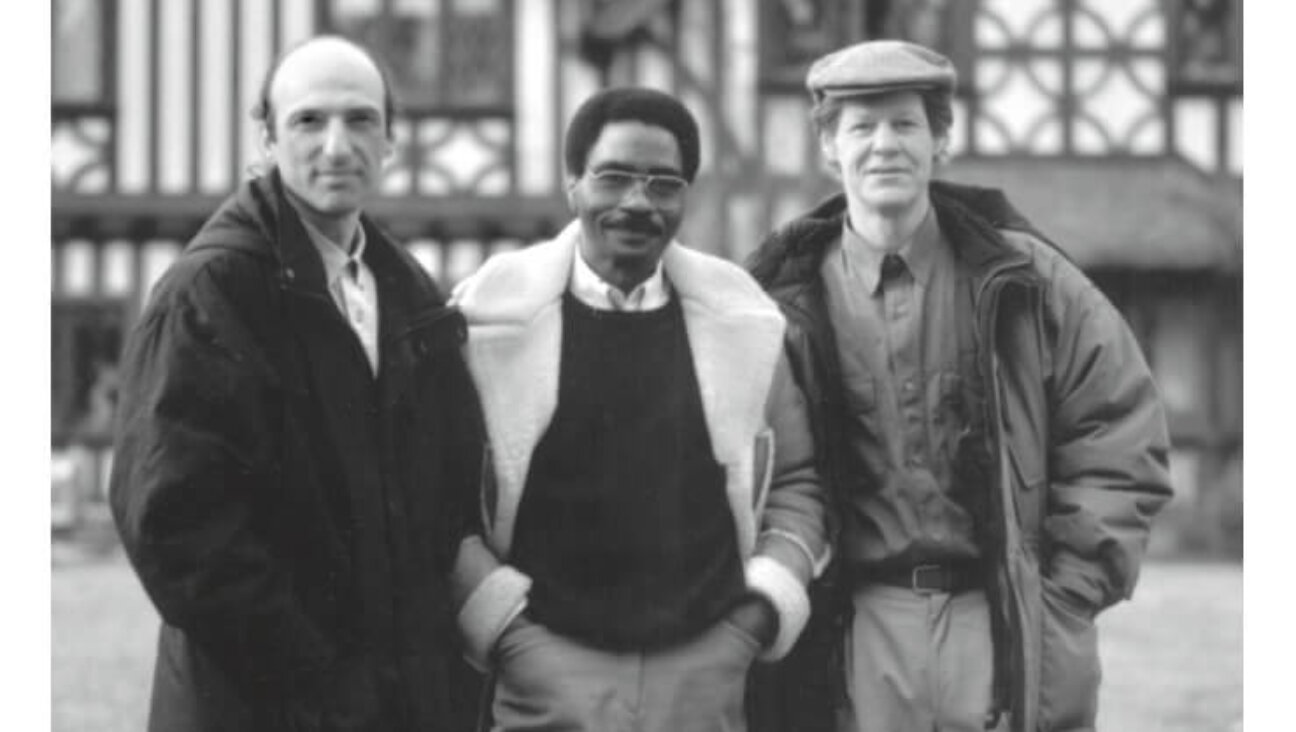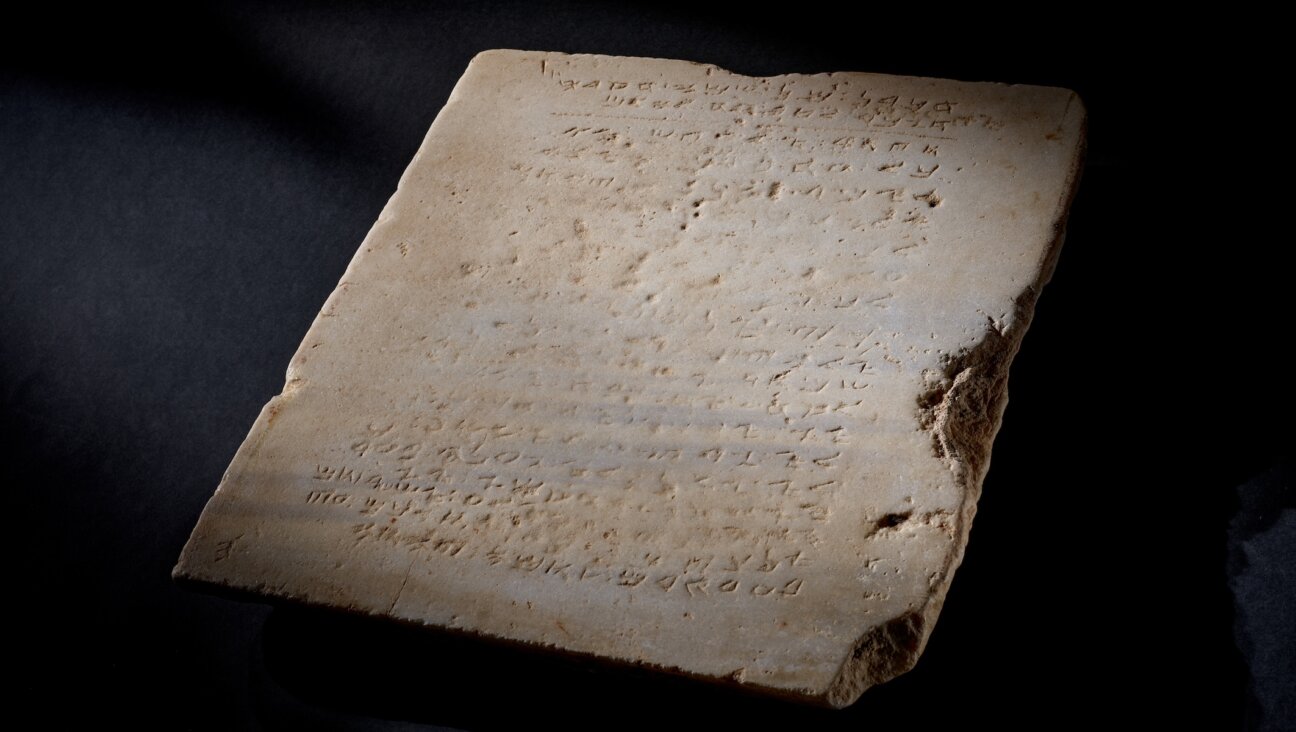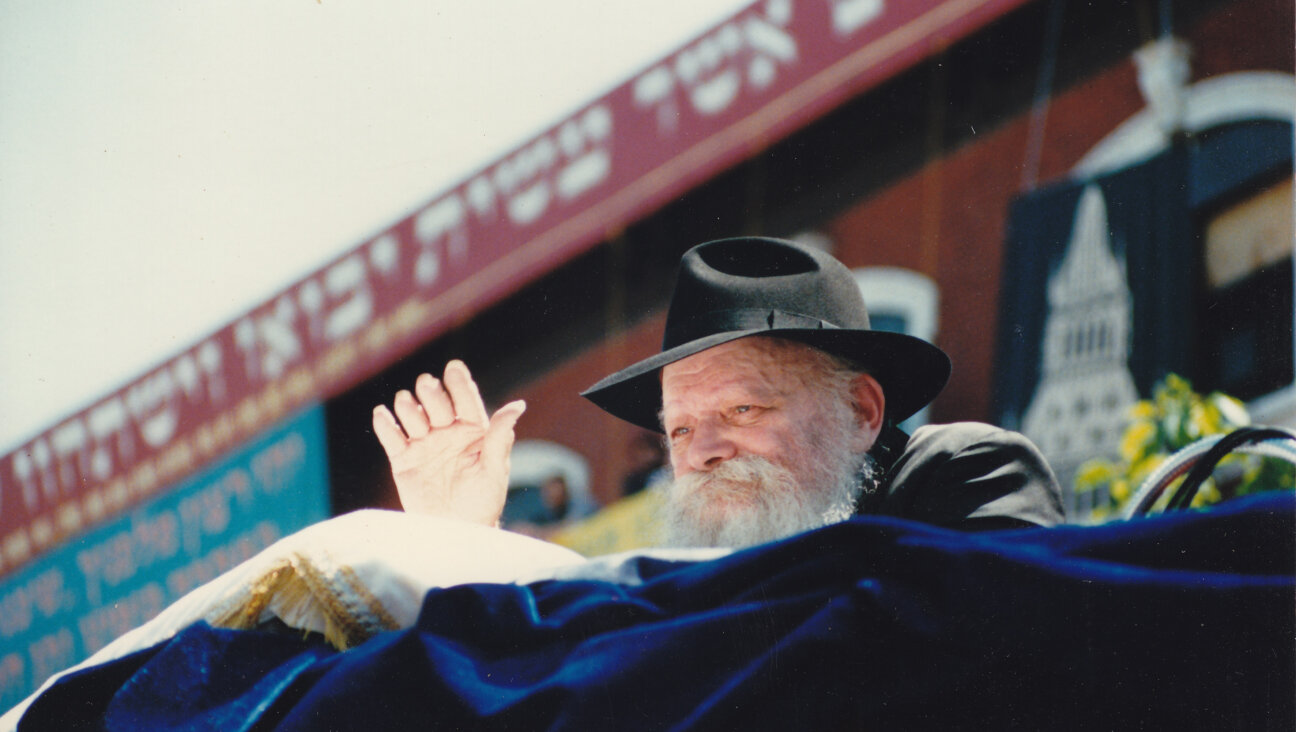YIVO Opens Internet Portal to the Past
Ever wonder what it was like to walk down Lubartovska Street in the Polish city of Lublin in 1937? Or what a Jewish self-defense group in the Ukrainian port city of Odessa looked like in 1918? Or how a kindergarten music class in a Lithuanian Jewish school sounded 70 years ago? A new curriculum targeted at secondary school and college students — supported by a splashy new Web site — provides a unique doorway into the past.
Culminating a four-year project, the YIVO Institute for Jewish Research has created the Educational Program on Yiddish Culture, drawing from its unparalleled archives of 22 million documents, posters, sound recordings, diaries and artifacts documenting Jewish Eastern European history prior to World War II.
The program provides an abundance of material that is largely overlooked in American Jewish and secular education — relics from a culture that was virtually wiped out by the Holocaust.
“Current curricula are largely Western European oriented,” said Carl J. Rheins, YIVO’s executive director. “There is little attention to Eastern or Jewish European history except when dealing with the Holocaust — a focus on the destruction process, but not the victims; what their lives were like, the language they spoke and the political situation in the countries they were in before the war. If we don’t make a change in the curriculum, the chances of [students] making a connection with Yiddish culture are slim.”
The EPYC materials, though, are wide and deep. A visit to the program’s Web site (http://epyc.yivo.org) yields an a array of opportunities to explore Eastern European history through portraits, autobiographies, maps, musical recordings, blueprints, essays and slide shows. Visit Warsaw, Vilna or Lodz. Click on unfamiliar Yiddish and Hebrew terms for glossary definitions. Explore youth culture, political life, religion, occupations and food.
The material currently online represents only a portion of what would be available to schools and teachers to use as part of a history course. YIVO hopes to have all the material — including four multidisciplinary modules, manuals, workbooks and sources — available online by the end of January for teachers to download for $250. Corresponding printed materials have not yet been priced for sale.
“It’s a treasure trove,” said Robert Shapiro, a history professor at Brooklyn College who participated in the EPYC pilot program in June 2003 while teaching 10th grade world Jewish history at Ramaz, a Modern Orthodox school in New York. “There was way more than I had time for.”
YIVO identifies three markets for the EPYC curriculum: Jewish day and supplemental schools, American public schools and people of any age seeking a resource for Holocaust studies. One goal is for the EPYC program to be adopted as an advanced placement-level European history course for high schools. In addition, translations are under way for the Israeli market as well as a potential exploration of the Spanish-speaking market in Buenos Aires, Argentina and Mexico City.
EPYC received financial support from the Smart Family Fund and from the Conference on Jewish Material Claims Against Germany, as well as a small federal grant, and the support of private benefactors from YIVO’s Leadership Forum for a total of $750,000 to date; a number of additional grant applications are still pending.
Rheins explained that while YIVO has high hopes for the program, expectations are realistic. “Our hope is that schools will seek to complement and supplement — not replace — the current curriculum,” he said. “We would love a school to establish a stand-alone course based on the EPYC materials, but most are likely to choose a la carte from the material.”
For now, the Web site functions as an invaluable resource for anyone searching the Internet for Yiddish culture, as well as a marketing tool for YIVO to get word out that this material exists.
“We always viewed the Web site as integral,” Rheins said. “The current generation of students have grown up with computer-based education, and if we relied only on book-based education, we’d be missing our audience.”
Rheins is also mindful that there are other users for this material, such as patrons of libraries, rabbis looking for material for sermons and lectures, and Jewish communal workers who, Rheins said, “don’t need academic credit, but need a credible Web site.”
Adina Cimet, who directed the EPYC program’s team of student researchers and prominent academic authors, expressed a special respect and interest in keeping Yiddish culture alive. Her father emigrated from Hrubieszhow, Poland, to Mexico when he was 3 and her mother, born in Kovno, Lithuania, survived Nazi extermination camps to live and thrive as a widely published sociologist in Mexico.
Cimet continues to speak Yiddish, and she taught it to her children. “I had to speak the language of my heart, in which I can think and express my emotions,” she said. “I felt I should share this with my children.”
Of EPYC, Cimet said: “The goal is first and foremost to understand the culture. Our research suggested that American high school history classes shortchange Eastern European history. There is very little in the history books about minorities; any time you come across a conflict, it is like it erupts out of nowhere.”
Cimet sees EPYC as “a way to adapt a program to treat 20th-century history in Europe with some logic as to why these things happen,” and warns against the danger of losing cultural distinctions, no matter what culture is threatened.
“Look at Yugoslavia, the Middle East, Rwanda,” she said. “People have to learn to live as different cultures in different groups. The world failed us, but we managed to survive with our own tools. It’s a kind of magic story of a culture that survived amidst onslaughts from other groups.”
And now there’s a new set of tools to help keep this story alive.
A message from our CEO & publisher Rachel Fishman Feddersen

I hope you appreciated this article. Before you go, I’d like to ask you to please support the Forward’s award-winning, nonprofit journalism during this critical time.
We’ve set a goal to raise $260,000 by December 31. That’s an ambitious goal, but one that will give us the resources we need to invest in the high quality news, opinion, analysis and cultural coverage that isn’t available anywhere else.
If you feel inspired to make an impact, now is the time to give something back. Join us as a member at your most generous level.
— Rachel Fishman Feddersen, Publisher and CEO























